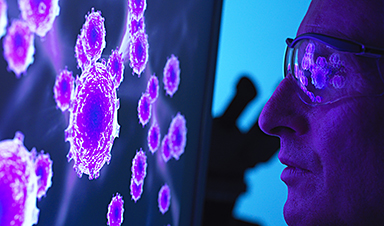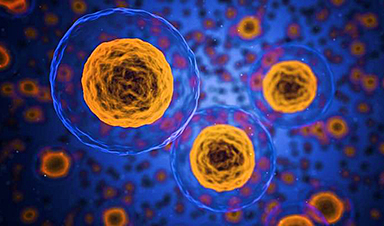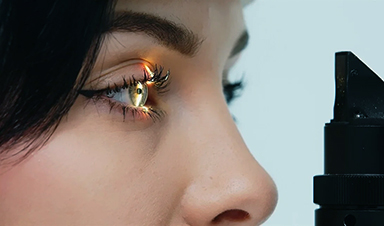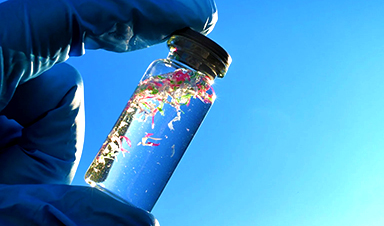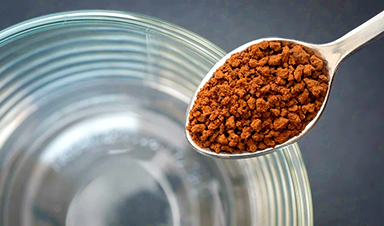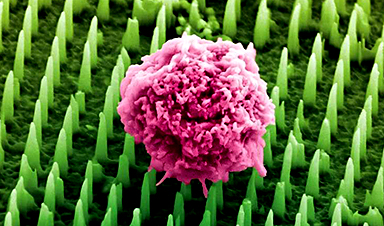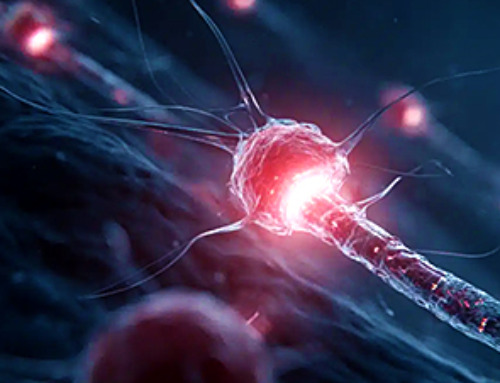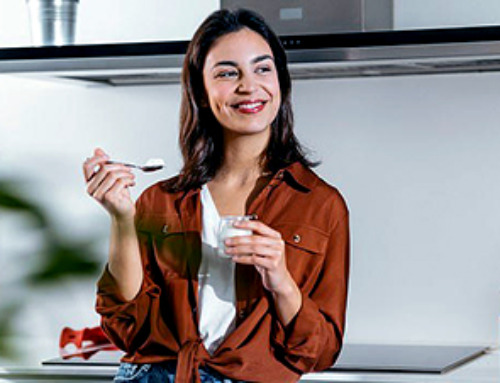In a recent study published in Nature Immunology, a team of researchers from the United States used non-human primate models to compare the protection conferred by an intramuscular booster dose of the bivalent messenger ribonucleic acid (mRNA) coronavirus disease 2019 (COVID-19) vaccine with that provided by a booster dose of a mucosal bivalent adenoviral vector vaccine delivered through an aerosol device or intranasal route.
Background
The rapidly developed COVID-19 vaccines were successful in limiting the severity and transmission of severe acute respiratory syndrome coronavirus 2 (SARS-CoV-2) infections, and the intramuscular booster doses continue to confer protection against high levels of morbidity and hospitalization.
However, studies have shown that the efficacy of intramuscularly administered bivalent mRNA vaccines vane after approximately four months, while breakthrough SARS-CoV-2 infections continue to occur.
Factors such as age, immunocompromised conditions, and post-acute sequelae could influence innate immunity levels and vaccine response, increasing the probability of breakthrough infections.
Vaccines that can prevent breakthrough infections would be effective in lowering the transmission levels and preventing the emergence of novel SARS-CoV-2 variants.
A mucosal vaccine, administered intranasally, could limit the transmission of SARS-CoV-2 by boosting the plasma cells and memory B cells in the lymphoid tissue associated with the mucosa and increasing the immune responses at the site of the infection.
About the study
In the present study, the researchers used Macaca mulatta or rhesus macaques to investigate the protective immune responses elicited by a mucosal bivalent adenoviral vector vaccine containing stabilized spike protein from the ancestral Wuhan strain and the Omicron BA.5 variant of SARS-CoV-2.
They compared these immune responses against those elicited by an intramuscular booster dose of a bivalent mRNA vaccine encoding the spike proteins of the same two variants.
Although the inflammation and pathology due to severe disease in humans are not completely recapitulated in non-human primate models, studies have shown that the virus readouts and immune responses observed in non-human primate models can be used to predict the clinical outcomes for Omicron infections in humans.
The adenoviral vector vaccine used in the study was the ChAd-SARS-CoV-2-S vaccine, which is currently being administered in the form of nasal drops in India under the name iNCOVACC. Viral vector vaccines using adenovirus, Newcastle disease virus, or parainfluenza virus can elicit immune responses at the site of the infection, making these vaccines an ideal candidate for a mucosal, intranasally administered booster dose.
The rhesus macaques in the study were primed with two intramuscular doses of an mRNA vaccine encoding the spike protein from the ancestral Wuhan strain.
Seven months after they were primed, one group of macaques was administered with the bivalent ChAd-SARS-CoV-2-S vaccine through an aerosol device, and the vaccine was delivered to the lower and upper airways.
A second group was administered the vaccine intranasally in the form of a mist using a clinical sprayer. In contrast, a comparison group was intramuscularly administered a booster dose of the bivalent mRNA vaccine.
The protection conferred by the mucosal adenoviral vector vaccine administered through aerosol and intranasal routes and the intramuscular booster dose of the bivalent mRNA vaccine were compared by challenging the animals with the XBB.1.16 strain of the virus four and a half months after the booster doses were administered.
Results
The study found that the viral replication in the lungs and the nose of the animals that were administered the mucosal adenoviral vector vaccine against SARS-CoV-2 was minimal for the animals in both the aerosol and intranasal administration groups.
In contrast, the animals that were intramuscularly administered the booster dose of the bivalent mRNA vaccine showed lower levels of viral replication only in the lower airways.
The mucosal vaccine also resulted in durable immunoglobulin (Ig) A and IgG responses in the airways and activated B cells specific for the spike protein in the lungs, which was not observed in the case of the intramuscular bivalent mRNA vaccine booster dose.
The study found that the aerosolized delivery of the mucosal vaccine elicited broad mucosal immunity in multiple respiratory compartments, which could rapidly suppress the replication of SARS-CoV-2.
In comparison, the intranasally administered booster dose of the same vaccine could only boost the IgA titers in the airway, which could prevent the local replication of the virus but could not inhibit viral replication in the lungs as effectively as the aerosolized booster dose or elicit memory B cells specific to the spike protein.
Conclusions
Overall, the findings showed that a booster dose of mucosal adenoviral vector vaccine against SARS-CoV-2, administered as an aerosol, was most effective in controlling viral replication in the lungs and the nose.
The IgA titers in the airways were indicative of the protection in the upper respiratory compartments. In contrast, memory B cell and T cell responses, as well as IgA and IgG titers, correlated with the protection conferred in the lower airways.
- Gagne, M., Flynn, B.J., Andrew, S.F., Marquez, J., Flebbe, D.R., Mychalowych, A., Lamb, E., DavisGardner, M.E., Burnett, M.R., Serebryannyy, Leonid A, Lin, B.C., Ziff, Z.E., Maule, E., Carroll, R., Naisan, M., Jethmalani, Y., Pessaint, L., Todd, J.M., DoriaRose, N.A. & Case, J.B. (2024). Mucosal adenovirus vaccine boosting elicits IgA and durably prevents XBB.1.16 infection in nonhuman primates. Nature Immunology. doi:10.1038/s41590024019515. https://www.nature.com/articles/s41590-024-01951-5
News
Drug-Coated Neural Implants Reduce Immune Rejection
Summary: A new study shows that coating neural prosthetic implants with the anti-inflammatory drug dexamethasone helps reduce the body’s immune response and scar tissue formation. This strategy enhances the long-term performance and stability of electrodes [...]
Scientists discover cancer-fighting bacteria that ‘soak up’ forever chemicals in the body
A family of healthy bacteria may help 'soak up' toxic forever chemicals in the body, warding off their cancerous effects. Forever chemicals, also known as PFAS (per- and polyfluoroalkyl substances), are toxic chemicals that [...]
Johns Hopkins Researchers Uncover a New Way To Kill Cancer Cells
A new study reveals that blocking ribosomal RNA production rewires cancer cell behavior and could help treat genetically unstable tumors. Researchers at the Johns Hopkins Kimmel Cancer Center and the Department of Radiation Oncology and Molecular [...]
AI matches doctors in mapping lung tumors for radiation therapy
In radiation therapy, precision can save lives. Oncologists must carefully map the size and location of a tumor before delivering high-dose radiation to destroy cancer cells while sparing healthy tissue. But this process, called [...]
Scientists Finally “See” Key Protein That Controls Inflammation
Researchers used advanced microscopy to uncover important protein structures. For the first time, two important protein structures in the human body are being visualized, thanks in part to cutting-edge technology at the University of [...]
AI tool detects 9 types of dementia from a single brain scan
Mayo Clinic researchers have developed a new artificial intelligence (AI) tool that helps clinicians identify brain activity patterns linked to nine types of dementia, including Alzheimer's disease, using a single, widely available scan—a transformative [...]
Is plastic packaging putting more than just food on your plate?
New research reveals that common food packaging and utensils can shed microscopic plastics into our food, prompting urgent calls for stricter testing and updated regulations to protect public health. Beyond microplastics: The analysis intentionally [...]
Aging Spreads Through the Bloodstream
Summary: New research reveals that aging isn’t just a local cellular process—it can spread throughout the body via the bloodstream. A redox-sensitive protein called ReHMGB1, secreted by senescent cells, was found to trigger aging features [...]
AI and nanomedicine find rare biomarkers for prostrate cancer and atherosclerosis
Imagine a stadium packed with 75,000 fans, all wearing green and white jerseys—except one person in a solid green shirt. Finding that person would be tough. That's how hard it is for scientists to [...]
Are Pesticides Breeding the Next Pandemic? Experts Warn of Fungal Superbugs
Fungicides used in agriculture have been linked to an increase in resistance to antifungal drugs in both humans and animals. Fungal infections are on the rise, and two UC Davis infectious disease experts, Dr. George Thompson [...]
Scientists Crack the 500-Million-Year-Old Code That Controls Your Immune System
A collaborative team from Penn Medicine and Penn Engineering has uncovered the mathematical principles behind a 500-million-year-old protein network that determines whether foreign materials are recognized as friend or foe. How does your body [...]
Team discovers how tiny parts of cells stay organized, new insights for blocking cancer growth
A team of international researchers led by scientists at City of Hope provides the most thorough account yet of an elusive target for cancer treatment. Published in Science Advances, the study suggests a complex signaling [...]
Nanomaterials in Ophthalmology: A Review
Eye diseases are becoming more common. In 2020, over 250 million people had mild vision problems, and 295 million experienced moderate to severe ocular conditions. In response, researchers are turning to nanotechnology and nanomaterials—tools that are transforming [...]
Natural Plant Extract Removes up to 90% of Microplastics From Water
Researchers found that natural polymers derived from okra and fenugreek are highly effective at removing microplastics from water. The same sticky substances that make okra slimy and give fenugreek its gel-like texture could help [...]
Instant coffee may damage your eyes, genetic study finds
A new genetic study shows that just one extra cup of instant coffee a day could significantly increase your risk of developing dry AMD, shedding fresh light on how our daily beverage choices may [...]
Nanoneedle patch offers painless alternative to traditional cancer biopsies
A patch containing tens of millions of microscopic nanoneedles could soon replace traditional biopsies, scientists have found. The patch offers a painless and less invasive alternative for millions of patients worldwide who undergo biopsies [...]











